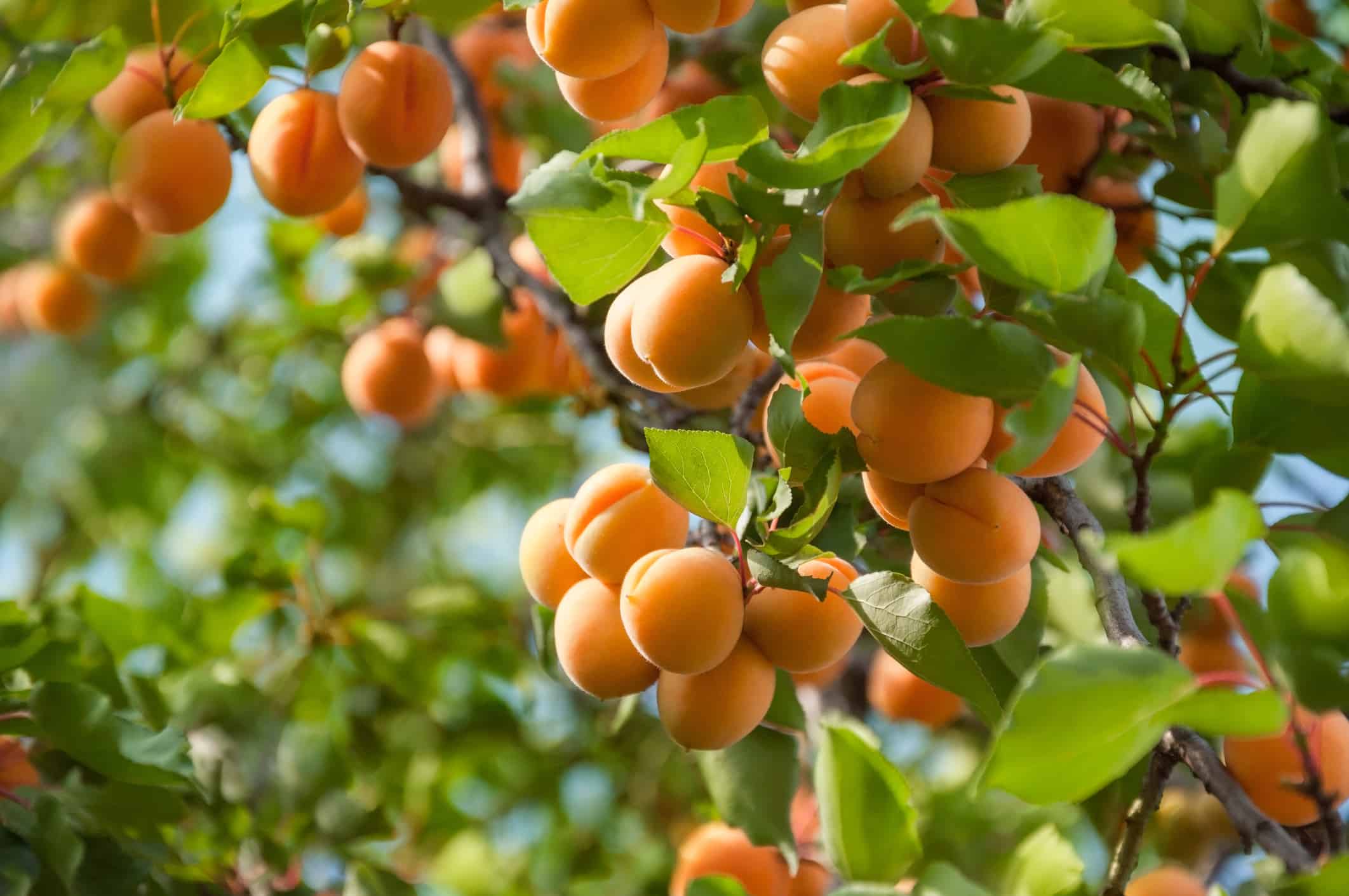From mouth-watering watermelon to tangy raspberries, fruit is among many people’s favorite snacks. Most fruits are thought to be nutritious and a healthy alternative to candy and junk food. Did you know that there are several dangerous fruits that can be poisonous if consumed? We’ve done the research and found out which fruits you should avoid altogether!
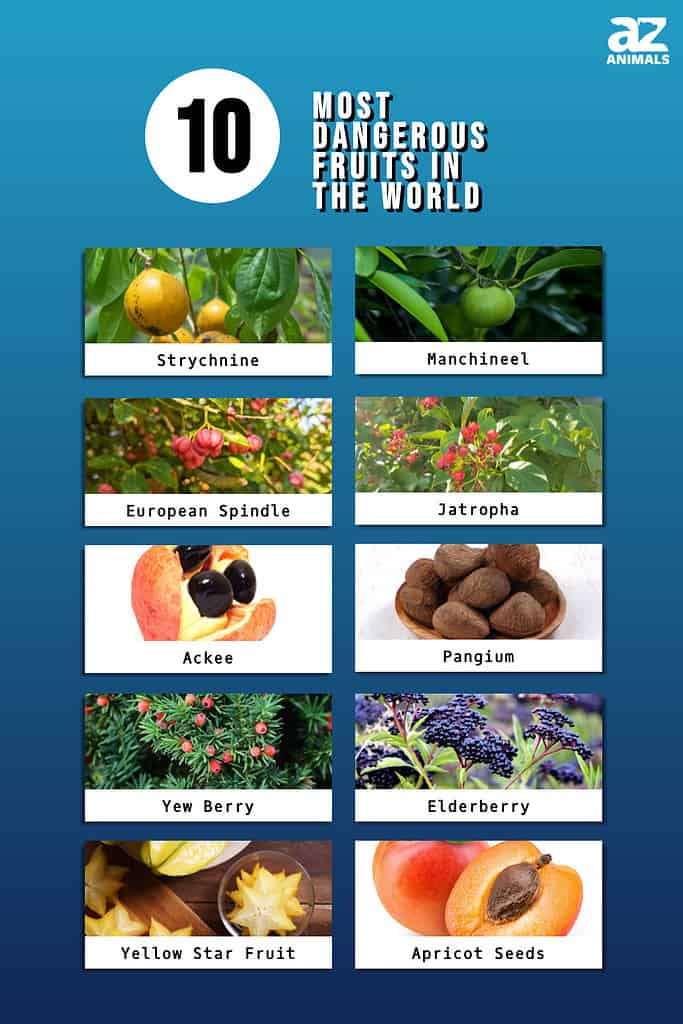
1. Strychnine
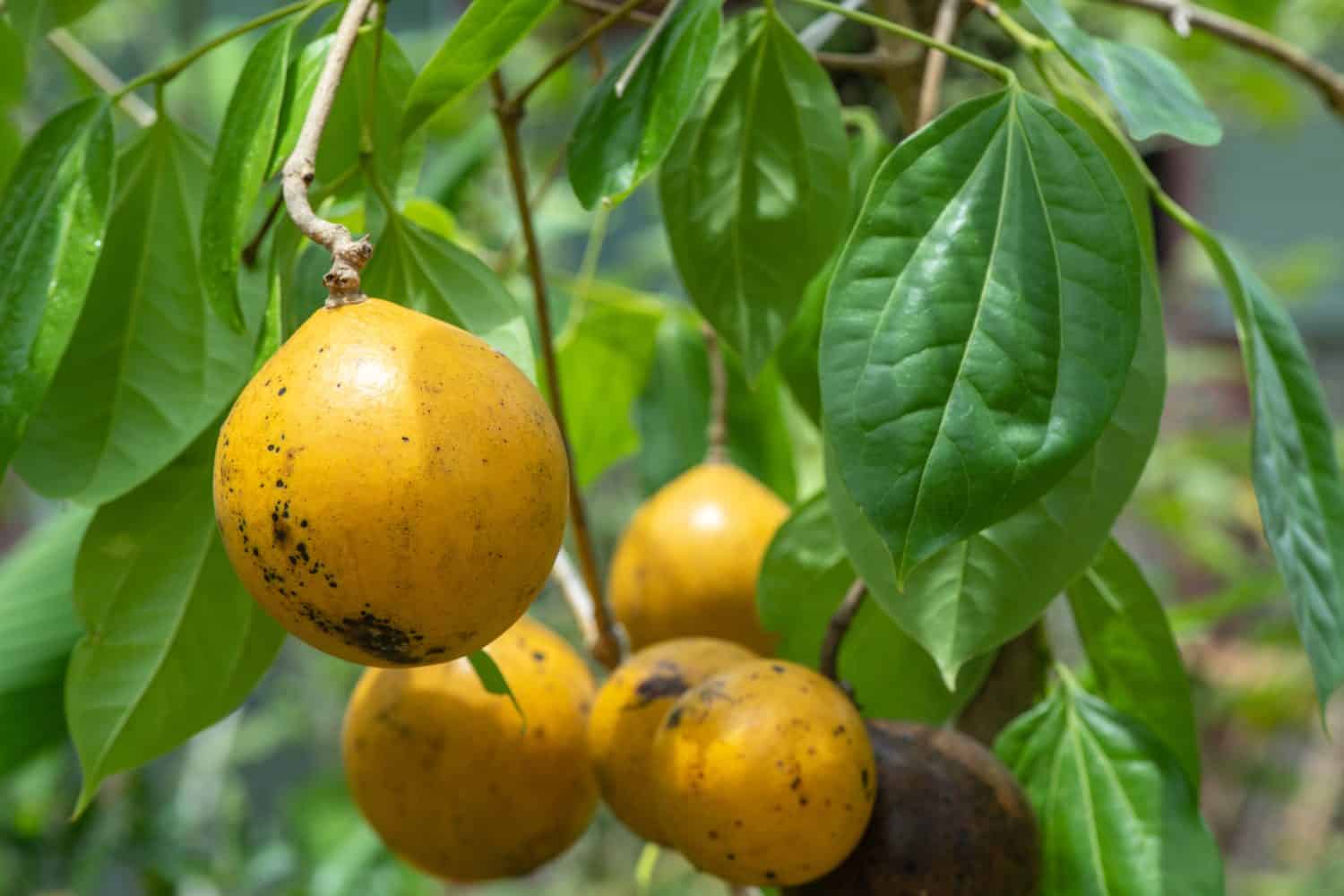
Snakewood is another name for strychnines.
©pisitpong2017/Shutterstock.com
Among the world’s most toxic substances, strychnine is extremely bitter and poisonous. Some cultures even nickname strychnine the “poison fruit.” With an orange skin, one could easily mistake a strychnine for an orange.
Inside, it looks slightly different than the classic citrus fruit. The inwards appear like clumps of orange slices in a less uniform manner. Strychnine is native to both southeast Asia and India. These fruits grow on massive trees that can tower over 60 feet tall.
The seeds inside the fruit have the wildly bitter alkaloids strychnine and brucine. The bark of the tree also contains brucine, which is poisonous on its own. Strychnine seeds have been used in the past to make poisonous arrows and are popularly used to kill animals during hunting seasons.
2. Manchineel

Beach apple is a nickname for manchineel.
©Stephen Orsillo/Shutterstock.com
Another one of the most dangerous fruits in the world is manchineel. While this fruit that resembles a granny smith apple is poisonous when consumed, even touching this plant can be dangerous.
The tree and fruit can give you edema and oral ulcerations. The sap of the tree can quickly burn, blister, and cause serious skin damage. This coastal tree is typically surrounded by signs and often painted red to give a warning to stay away.
The manchineel tree can grow to be 50 feet tall and has small bright green fruits. If you ever see one of these trees on its native coast of Florida, keep your distance. The poison in the sap and the fruit was previously used in similar ways to strychnine to make deadly arrows.
3. European Spindle
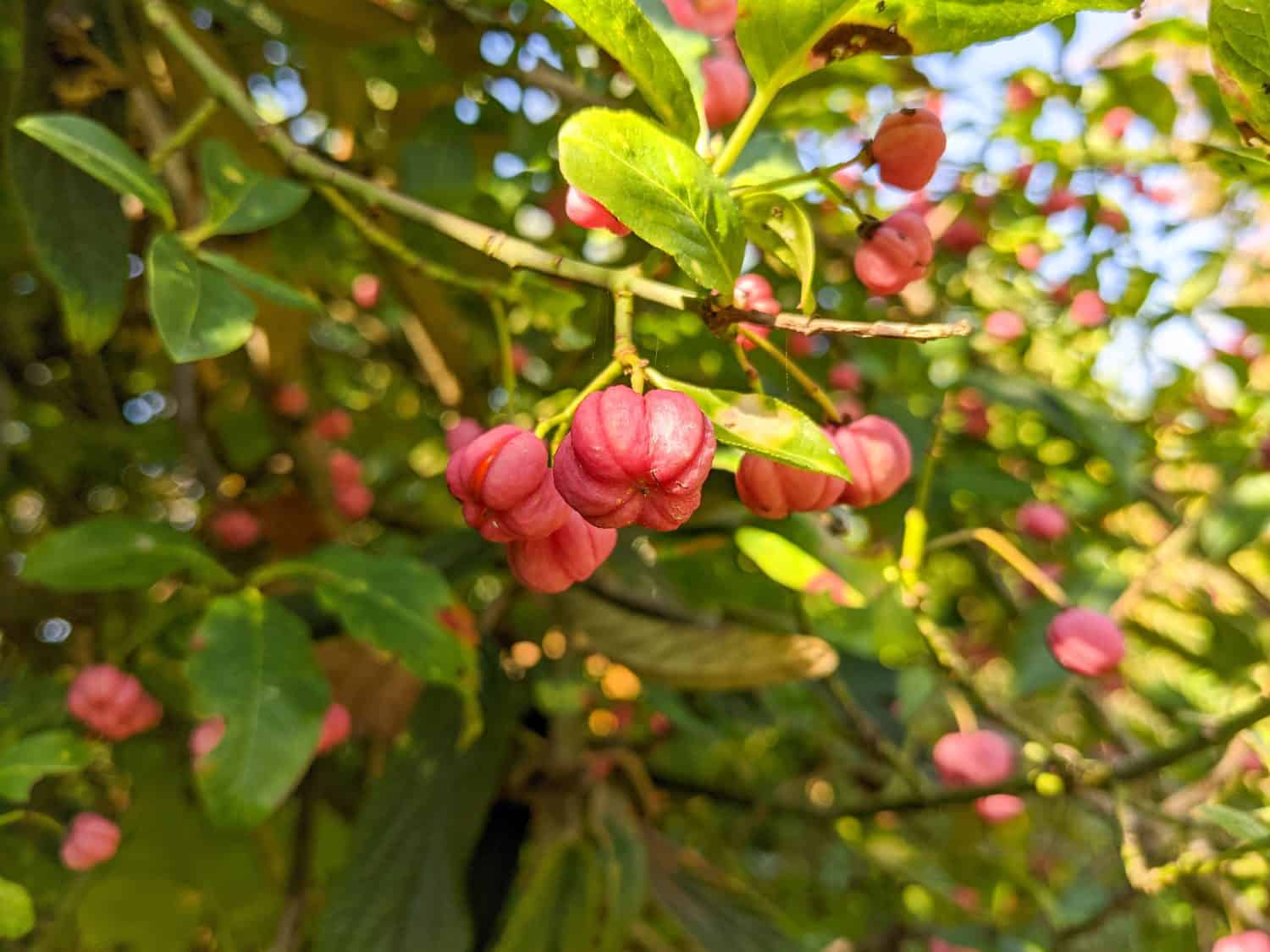
The European spindle tree typically reaches heights of 20 feet tall.
©Katja Bruckner/Shutterstock.com
The European spindle is a fruit that can be dangerous if you’re not close to a bathroom. Unlike the first two on this list, it’s not quite as deadly. In fact, many birds and insects eat European spindles.
This tree grows all over Europe. You can find it deep in the woods or on hedges around residential regions. The berries and flowers of the European spindle should never be consumed by humans.
It has an effect similar to a laxative. That’s not all that European spindle can do to your body. This orange and pink fruit can cause painful stomach aches, cramps, and nausea.
4. Jatropha
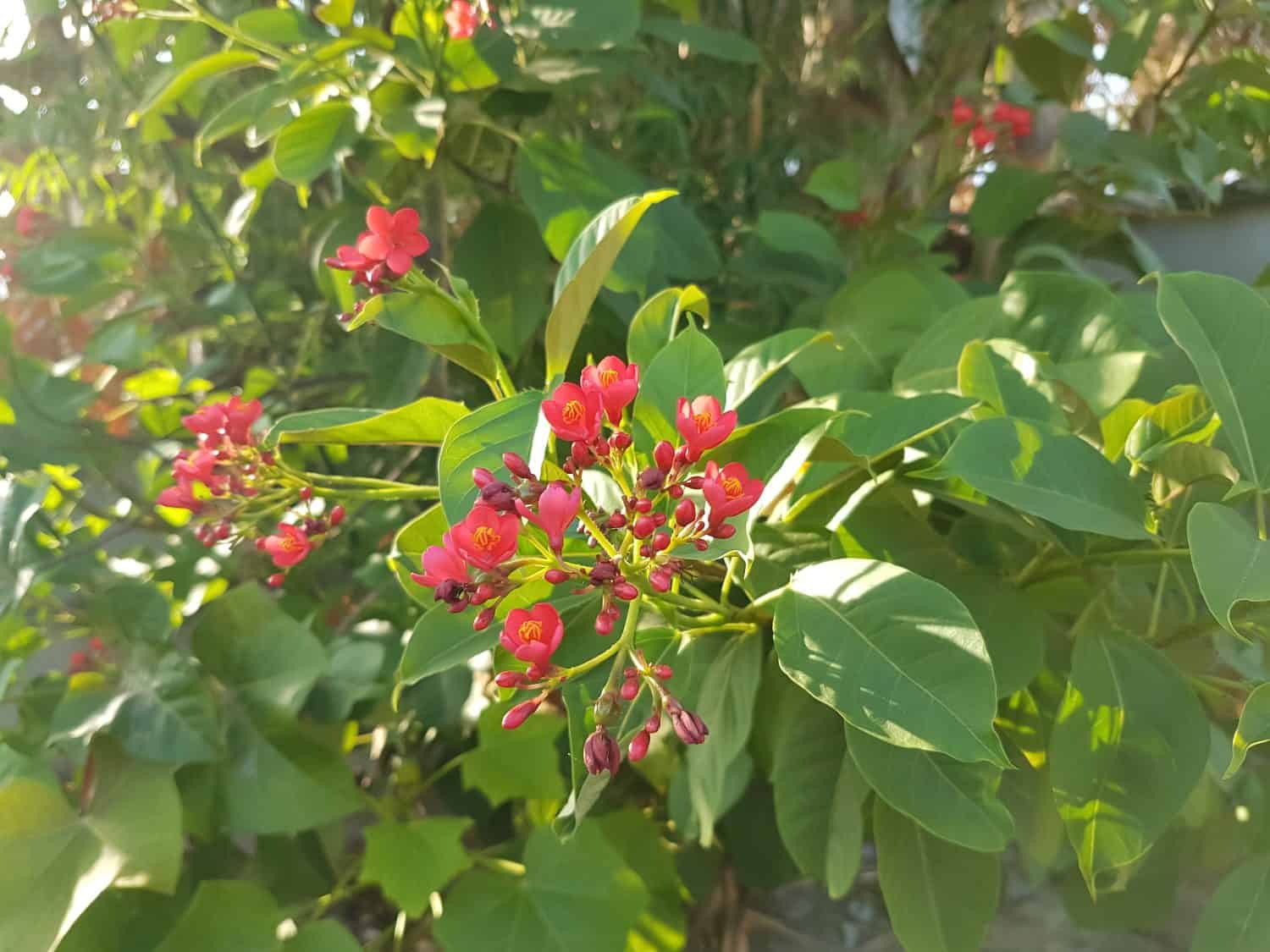
Some people call this plant spicy jatropha.
©Alicia97/Shutterstock.com
With a slightly similar appearance to a mango on the outside, jatropha is one of the most poisonous fruits in the world. This fruit grows in Hawaii and Latin America. It has nicknames such as “purge nut” and “black vomit nut” for a reason.
This small fruit turns from green to yellow to brown as it matures. History shows that this tree and its fruit were once used for medicinal purposes and as “living fences.” The seeds have a high amount of ricin, which can lead to the below.
- Burning of the throat
- Stomach pain
- Cramps
- Vomiting
- Diarrhea
- Heart failure
- Dehydration
5. Ackee

Ackee is native to tropical parts of West
Africa
.
©Drizzyphotographyja/Shutterstock.com
Even as the national fruit of Jamaica, Ackee can be incredibly dangerous when consumed raw. From both locals and visitors eating this fruit raw, the effects are known as “Jamaican vomiting sickness.”
Inside the reddish exteriors, you’ll find huge black seeds. The poison from the raw fruit is called hypoglycin. This poison remains in the seeds, whether they’re cooked or not. The only edible part of ackee is the yellow arilli once it’s fully cooked.
When eaten raw, it can lead to a coma or death. Ackee that is ripe and cooked is completely harmless, safe to consume, and quite tasty. People in Jamaica eat ackee regularly and don’t experience any negative effects.
6. Pangium
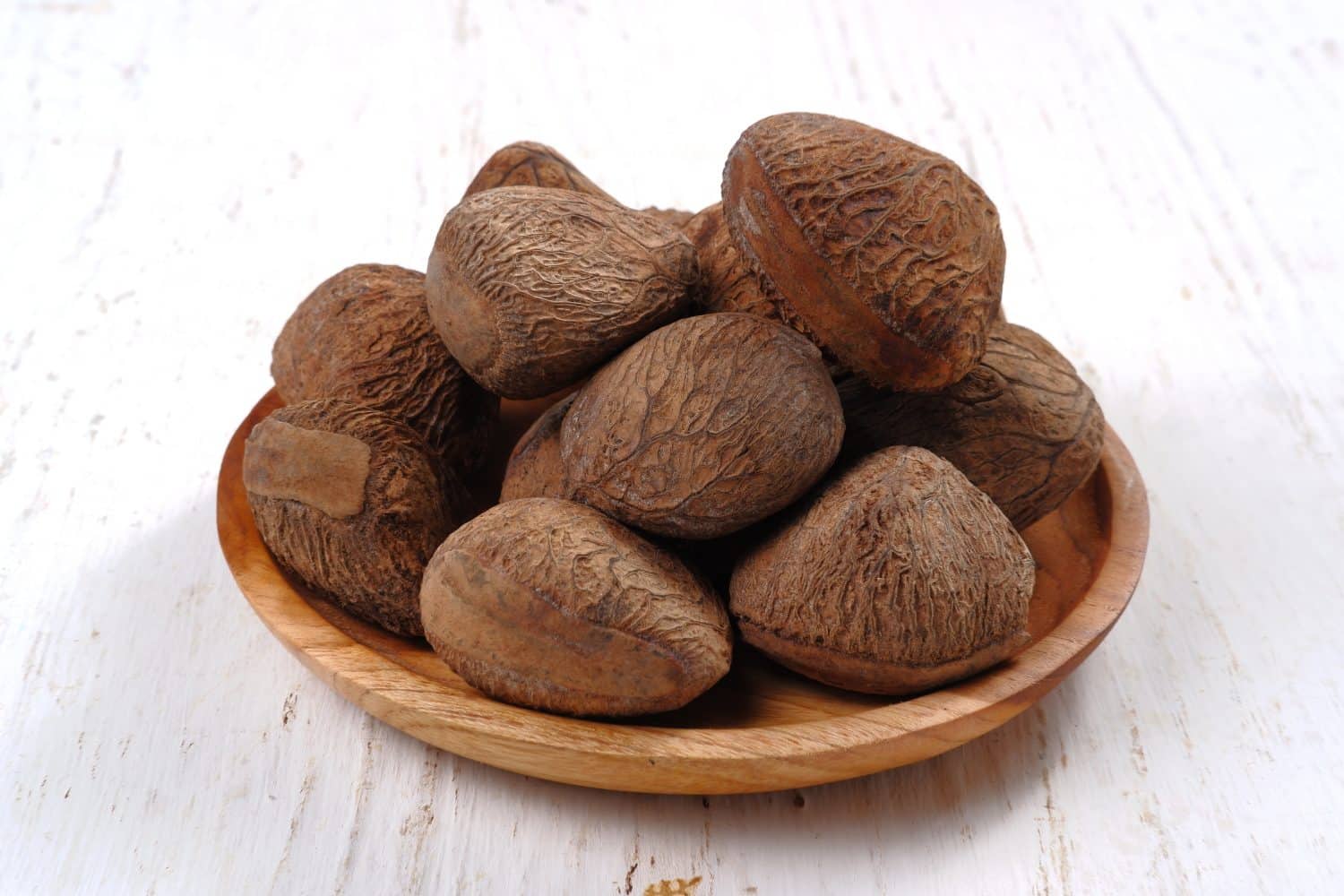
Pangium trees are cypress trees that have been around since Pangea.
©Edgunn/Shutterstock.com
Native to southeast Asia, Pangium is a tall tree that grows in swamplands. Nicknamed the “football fruit,” Pangi is one of the most dangerous fruits in the world. It’s only edible after fermentation.
The seeds inside Pangi have hydrogen cyanide and can lead to death when eaten raw. People who use these seeds as a spice in foods such as beef stew take several measures to ensure they’re not consuming something toxic.
Pangi seeds are boiled, and buried in ash with banana leaves for 40 days! This allows the hydrogen cyanide to be released as the seeds ferment. The kernels within the seeds are ground up and used in several Indonesian dishes.
Consuming pang raw can lead to a variety of uncomfortable symptoms. These include the following.
- Weakness
- Shortness of breath
- Headache
- Dizziness
- Confusion
7. Yew Berry
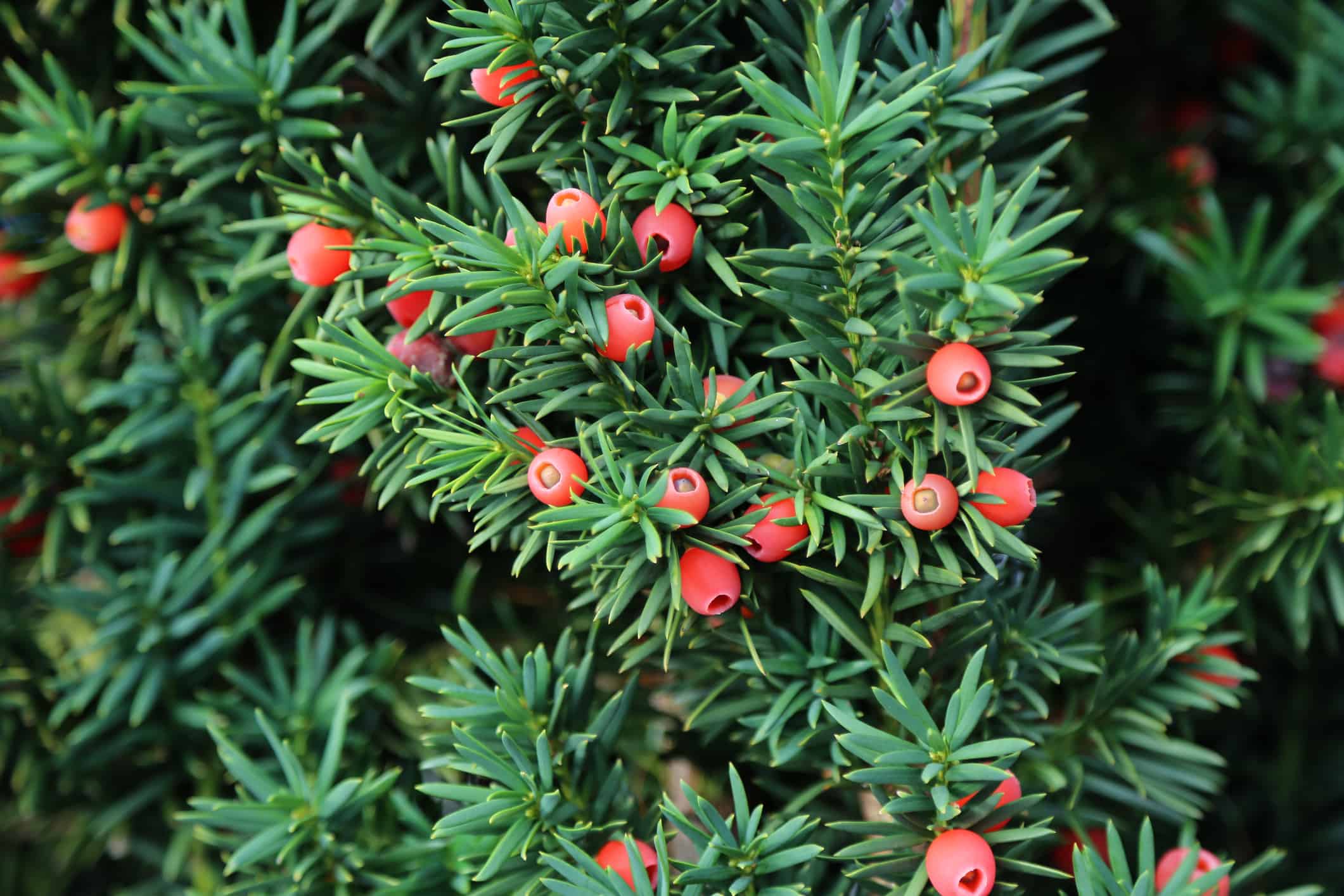
The red aril flesh is the only edible part of a yew berry tree.
©iStock.com/Leo Malsam
When looking at a yew berry, you may not expect it to be one of the most dangerous fruits. These red olive-looking fruits grow on trees and can easily attract a myriad of woodland creatures.
Several animals such as caterpillars, blackbirds, and squirrels eat yew berries. That being said, the majority of the yew tree is extremely poisonous when ingested. There is a toxic compound called taxines that can lead to a variety of health issues.
- Stomach pain
- Muscle weakness
- Diarrhea
- Headache
- Vomiting
- Dizziness
Consuming any of the leaves, bark, or seeds of a yew berry tree can lead to these conditions for most mammals.
8. Elderberry
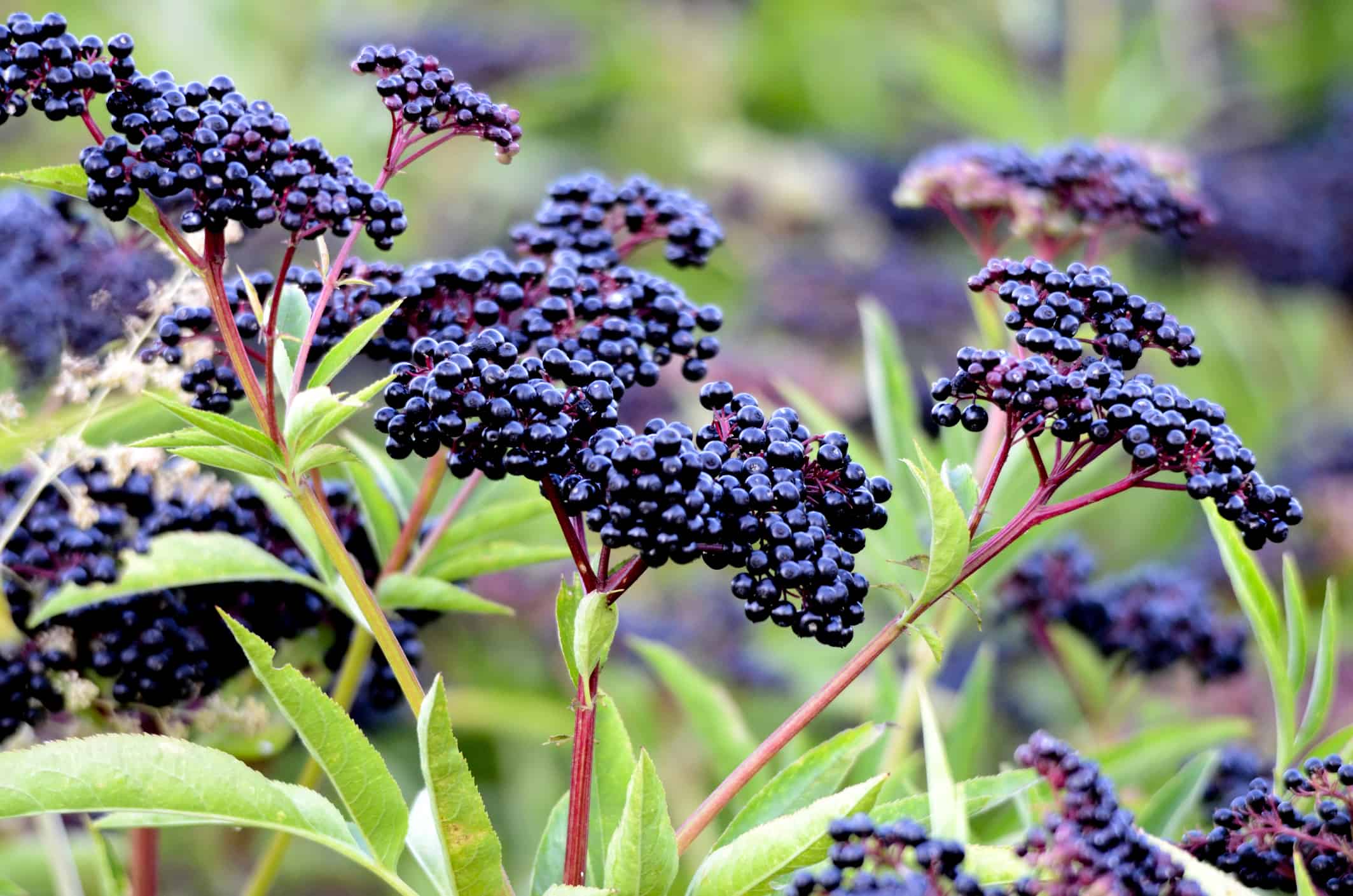
Elderberry is native to the United States.
©iStock.com/redstallion
You may be surprised to see elderberries on a list of the most dangerous fruits. Elderberry is a popular fruit used across the world for things such as syrups, jelly, and even wine. That being said, the leaves, seeds, and twigs are dangerous.
There is a compound called glycoside within these parts of an elderberry tree. This compound is one of the main parts of cyanide. Another toxic substance called sambunigrin is present in raw unripe elderberries.
Cooking the berries eliminates the danger of the fruit. Even if you want to drink this tasty berry, be sure that it’s cooked first to reduce any chance of consuming these toxins. Never eat any of the bark or seeds.
If you do, you may experience side effects such as diarrhea, vomiting, and nausea.
9. Yellow Star Fruit
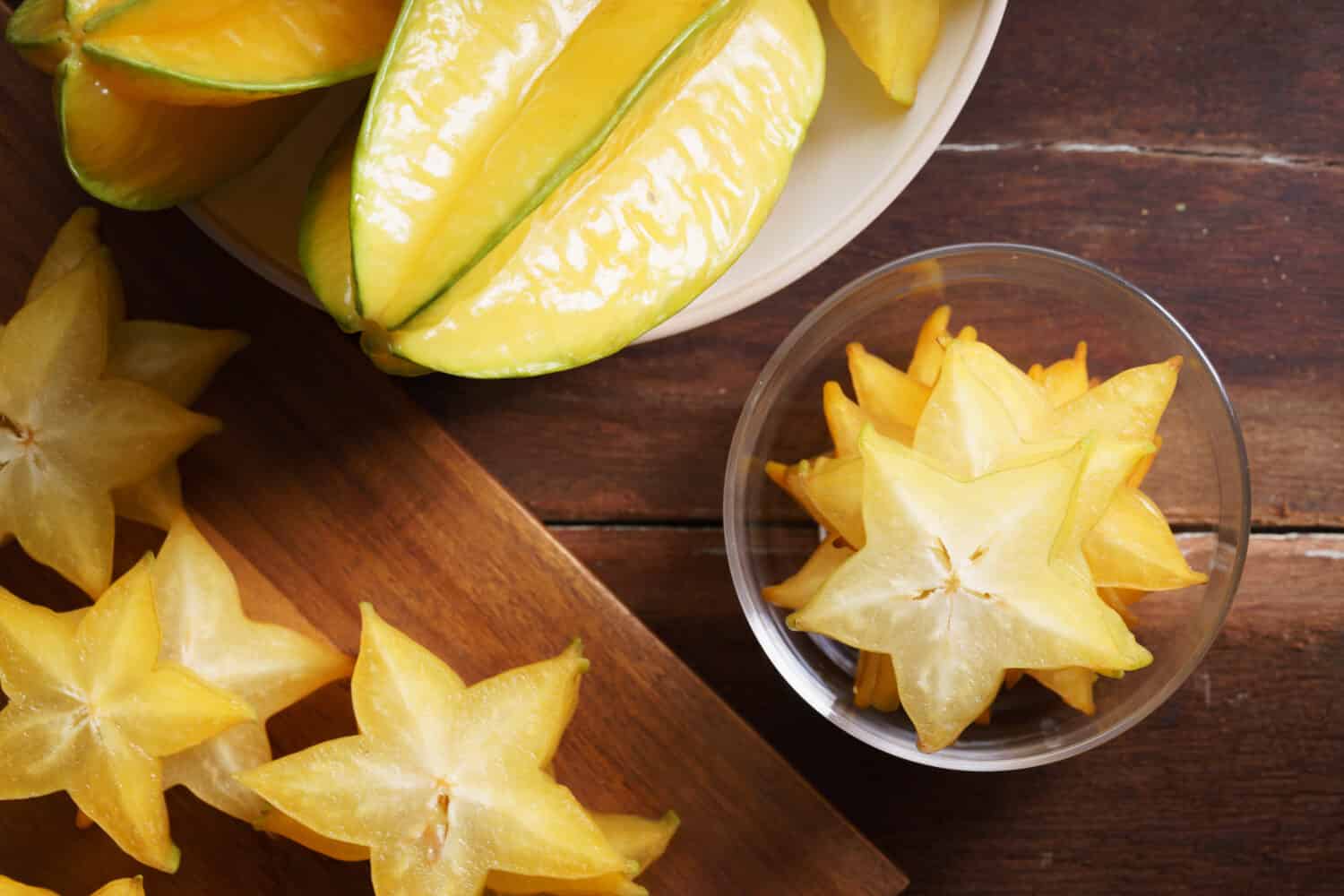
Starfruit is only dangerous to those with kidney disease.
©janecocoa/Shutterstock.com
If you have any health issues with your kidneys, yellow star fruit is one of the most dangerous fruits in the world. While many people can eat it without experiencing any issues, those with chronic kidney disease are at risk.
See, yellow star fruit contains a compound that is typically processed and excreted by the kidney’s natural function. When your kidneys aren’t functioning properly, this compound acts like a neurotoxin and is absorbed into your body.
You may not know you have issues with your kidneys and find out by eating a yellow star fruit. Look out for these symptoms after consumption which could mean you have serious health issues within this vital organ.
- Hiccups
- Seizures
- Mental confusion
Although it’s not common, death can occur when eating yellow starfruit. Eating it in excess, even as a healthy individual, can lead to secondary oxalosis that shows as renal insufficiency, urolithiasis, and nephrocalcinosis.
10. Apricot Seeds

Some cultures have used apricot seeds to combat digestive issues.
©Tim UR/Shutterstock.com
While apricots are a delicious fruit that makes a lovely jam, the seeds inside are dangerous. Within the seed, there is a kernel, and in high doses, it can be dangerous. It contains a substance called laetrile, also known as amygdalin.
When a person consumes this substance it can turn into cyanide within the body. There are cultures in history that believe that amygdalin can cure cancer. Science shows that it can lead to a myriad of health issues.
- Low blood pressure
- Insomnia
- Anxiety
- Death
These are just a few of the things that can happen if you eat excessive amounts of amygdalin. To avoid this, enjoy the apricot without consuming its seeds.
Summary of the 10 Most Dangerous Fruits in the World
| Number | Fruit |
|---|---|
| 1 | Strychnine |
| 2 | Manchineel |
| 3 | European Spindle |
| 4 | Jatropha |
| 5 | Ackee |
| 6 | Pangium |
| 7 | Yew Berry |
| 8 | Elderberry |
| 9 | Yellow Star Fruit |
| 10 | Apricot Seeds |
Thank you for reading! Have some feedback for us? Contact the AZ Animals editorial team.

